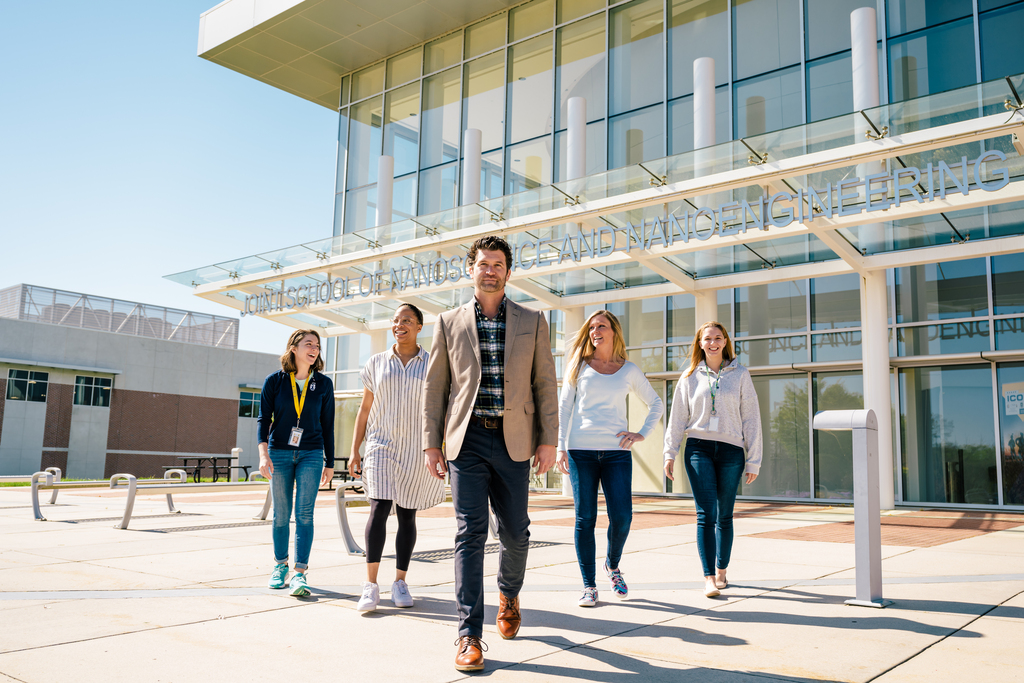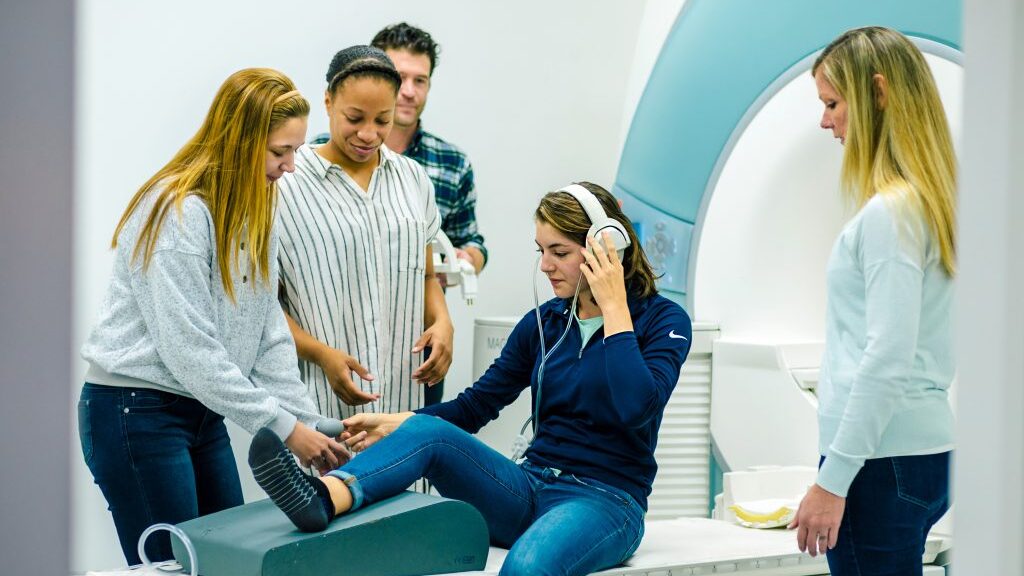Gateway MRI Center
Fostering Vibrant, Cross-Disciplinary Investigations
The UNCG-led Gateway MRI Center for Functional and Molecular Imaging is comprised of imaging scientists who collaborate across disciplines, to explore emerging frontiers in neural engineering and to develop new approaches for determining anatomical and functional connectivity in neural circuits.
The center welcomes researchers from all fields interested in utilizing our resources.
About Us
The Gateway MRI Center for Functional and Molecular Imaging at Gateway University Research Park in Greensboro, North Carolina consists of interdisciplinary scientists with expertise in structural and functional imaging.
Housed in a state-of-the-art building at the Joint School for Nanoscience and Nanoengineering (JSNN), our imaging scientists collaborate across disciplinary fields to exploit emerging frontiers in neural engineering and develop new approaches for determining anatomical and functional connectivity in neural circuits. These frontiers include analyses, recording, imaging and manipulating activity in networks and defined ensembles of neurons.

Featured Research

January 18, 2024
Into the Tissue
UNCG researchers are using a magnetic resonance imaging machine, or MRI, to peer inside joints and take pictures of study volunteers…

January 18, 2024
Tools of the Trade
At the Joint School of Nanoscience and Nanoengineering, or JSNN, millions of dollars’ worth of major scientific instruments are al…

January 18, 2024
Jogging Your Memory
Dr. Jennifer Etnier recently gave her 79-year-old mother a smartphone. Her mother’s memory is almost impeccable, and Etnier knew s…
About the JOINT SCHOOL OF NANOSCIENCE AND NANOENGINEERING
Our Gateway MRI Center experimental work is tightly coupled with the theoretical and computational efforts carried out by scientists within JSNN and the University of North Carolina at Greensboro, along with regional, national, and global partners.
2
high research universities, UNCG and NCA&T
Provide access to student workforce through internships and co-op programs and build on the strengths of both Universities to offer an innovative, cross-disciplinary graduate program that trains scientists in various emerging areas of nanoscience and nanoengineering
105,000
square foot two-story research building
Which houses partner labs, cleanroom, wet lab space, fermentation lab, thermochemical lab, tissue culture and cell culture space, biophysics lab, bioscience open lab, and a shared suite of analytical tools. Located at Gateway Research Park, 2.8 miles from downtown Greensboro, NC
$64 mil
academic collaboration
Includes opportunities with advanced microscopy and analytical characterization tools including high resolution transmission electron microscope (HR-TEM), X-ray diffraction (XRD), micro- computed tomography (micro-CT), X-ray photoelectron spectroscopy (XPS), and many more
4
Research Focus Areas
Synthetic Biology, Nanomaterials (Molecular and Structural Devices), Computational Nanotechnology, and Environmental Science and Sustainability afford numerous opportunities for collaboration with industrial partners